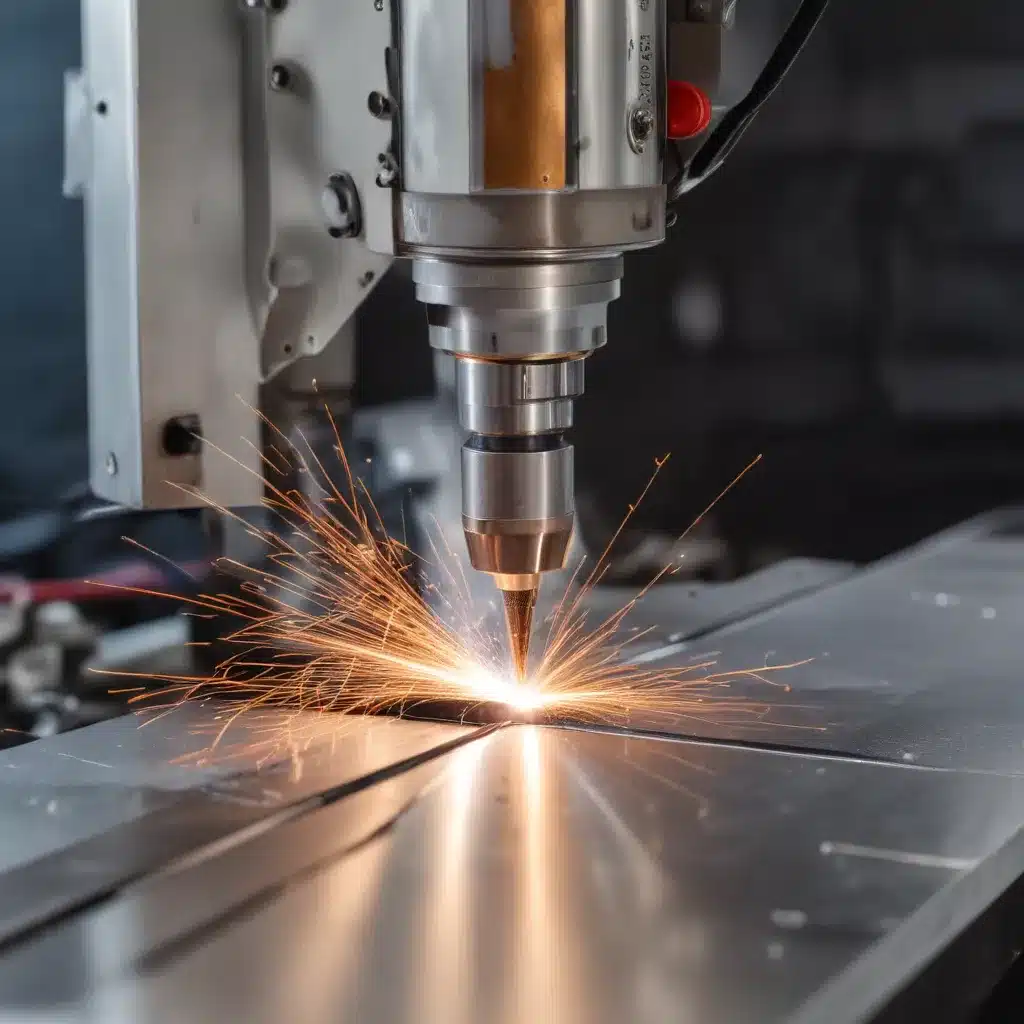
As an experienced welder and metal fabricator, I’ve had the opportunity to work with a wide range of welding techniques and equipment. One process that has particularly piqued my interest is the concept of laser-assisted cold metal transfer (CMT) welding. In this article, I’ll share my insights and personal experiences with this innovative welding approach, delving into its benefits, best practices, and the remarkable potential it holds for the fabrication industry.
Embracing the Power of Laser-Assisted CMT Welding
When it comes to welding, I’m always on the lookout for methods that can enhance the quality, efficiency, and versatility of my work. The introduction of laser-assisted CMT welding has been a game-changer, offering a unique solution that combines the precision of laser technology with the flexibility of cold metal transfer.
Traditional welding techniques often involve high heat input, which can lead to distortion, residual stresses, and a range of other challenges. But with laser-assisted CMT welding, the laser beam serves as a guiding light, precisely controlling the heat input and allowing for a more controlled and stable welding process. This, in turn, results in significantly reduced distortion, improved joint integrity, and enhanced overall quality.
As I delved deeper into this innovative approach, I was particularly impressed by its ability to handle a wide variety of materials, from thin-gauge steels to non-ferrous alloys. The low heat input and precise control enabled by the laser assistance allow for seamless welding of materials that were previously considered difficult to join using conventional methods.
Mastering the Intricacies of Laser-Assisted CMT Welding
To truly harness the power of laser-assisted CMT welding, it’s essential to understand the underlying principles and best practices. Through my own experiences and learnings, I’ve gained a deeper appreciation for the nuances involved in this welding process.
Optimizing Welding Parameters
One of the crucial aspects of laser-assisted CMT welding is the careful optimization of welding parameters. The interplay between the laser power, welding speed, wire feed rate, and shielding gas flow can have a significant impact on the final weld quality. As a seasoned welder, I’ve learned to meticulously fine-tune these parameters to achieve the desired outcomes, whether it’s maximizing penetration, minimizing distortion, or ensuring consistent bead appearance.
Ensuring Proper Joint Preparation
Proper joint preparation is another essential element in the success of laser-assisted CMT welding. Ensuring that the workpiece surfaces are clean, free of contaminants, and accurately aligned is crucial for achieving a consistent and high-quality weld. I’ve found that a systematic approach to joint preparation, involving thorough cleaning, joint fit-up, and maintaining tight tolerances, can make a significant difference in the overall performance of the welded joint.
Mastering the Welding Technique
The welding technique itself is also a crucial factor in laser-assisted CMT welding. As an experienced welder, I’ve honed my skills in manipulating the welding torch, maintaining the proper travel angle, and coordinating the wire feed to achieve a seamless and consistent weld bead. The ability to maintain a steady hand, a keen eye, and a deep understanding of the welding dynamics is paramount in this process.
Leveraging Advanced Monitoring and Control Systems
The integration of advanced monitoring and control systems has been a game-changer in the world of laser-assisted CMT welding. These systems enable real-time monitoring of critical parameters, such as weld pool behavior, wire position, and arc characteristics. By closely monitoring these factors and making timely adjustments, I’ve been able to consistently deliver high-quality welds, even in the most demanding applications.
Unlocking the Potential of Laser-Assisted CMT Welding
As I continue to explore the capabilities of laser-assisted CMT welding, I’m continuously amazed by the remarkable potential it holds for the fabrication industry. This innovative technique has opened up new possibilities in terms of material compatibility, joint design, and overall process efficiency.
Expanding Material Compatibility
One of the standout features of laser-assisted CMT welding is its ability to handle a diverse range of materials, including thin-gauge steels, aluminum, and even dissimilar metal combinations. This has been particularly beneficial in industries where lightweight and corrosion-resistant materials are of paramount importance, such as automotive, aerospace, and marine fabrication.
Enhancing Joint Design Flexibility
The precise control and low heat input of laser-assisted CMT welding have also allowed me to explore more complex joint designs, such as lap joints, T-joints, and even intricate fillet welds. This flexibility has opened up new avenues for fabricators, enabling them to tackle a wider range of project requirements and push the boundaries of what’s possible in metal fabrication.
Improving Productivity and Reducing Costs
In addition to the enhanced quality and material compatibility, laser-assisted CMT welding has also demonstrated notable improvements in productivity and cost-effectiveness. The reduced distortion and the ability to weld thinner materials have resulted in faster turnaround times, reduced rework, and lower material consumption. This, in turn, has translated into significant cost savings for my fabrication business, allowing us to remain competitive and deliver exceptional value to our clients.
Embracing the Future of Welding and Fabrication
As I look to the future, I’m deeply excited about the continued advancements and innovations in the world of welding and metal fabrication. The emergence of laser-assisted CMT welding is just one example of how our industry is constantly evolving, driven by a relentless pursuit of precision, efficiency, and quality.
As a welder and fabricator, I’m committed to staying at the forefront of these developments, constantly learning, experimenting, and honing my skills. By embracing cutting-edge technologies like laser-assisted CMT welding, I believe we can push the boundaries of what’s possible in metal fabrication, delivering unparalleled solutions to our clients and contributing to the growth and progress of our industry.
If you’re a fellow welder or fabricator, I encourage you to explore the possibilities of laser-assisted CMT welding. Immerse yourself in the intricacies of this process, experiment with the various parameters, and discover how it can enhance your own metalworking capabilities. Together, let’s continue to shape the future of our craft and cement The Weld Fab’s reputation as a leader in precision fabrication and innovative welding solutions.


